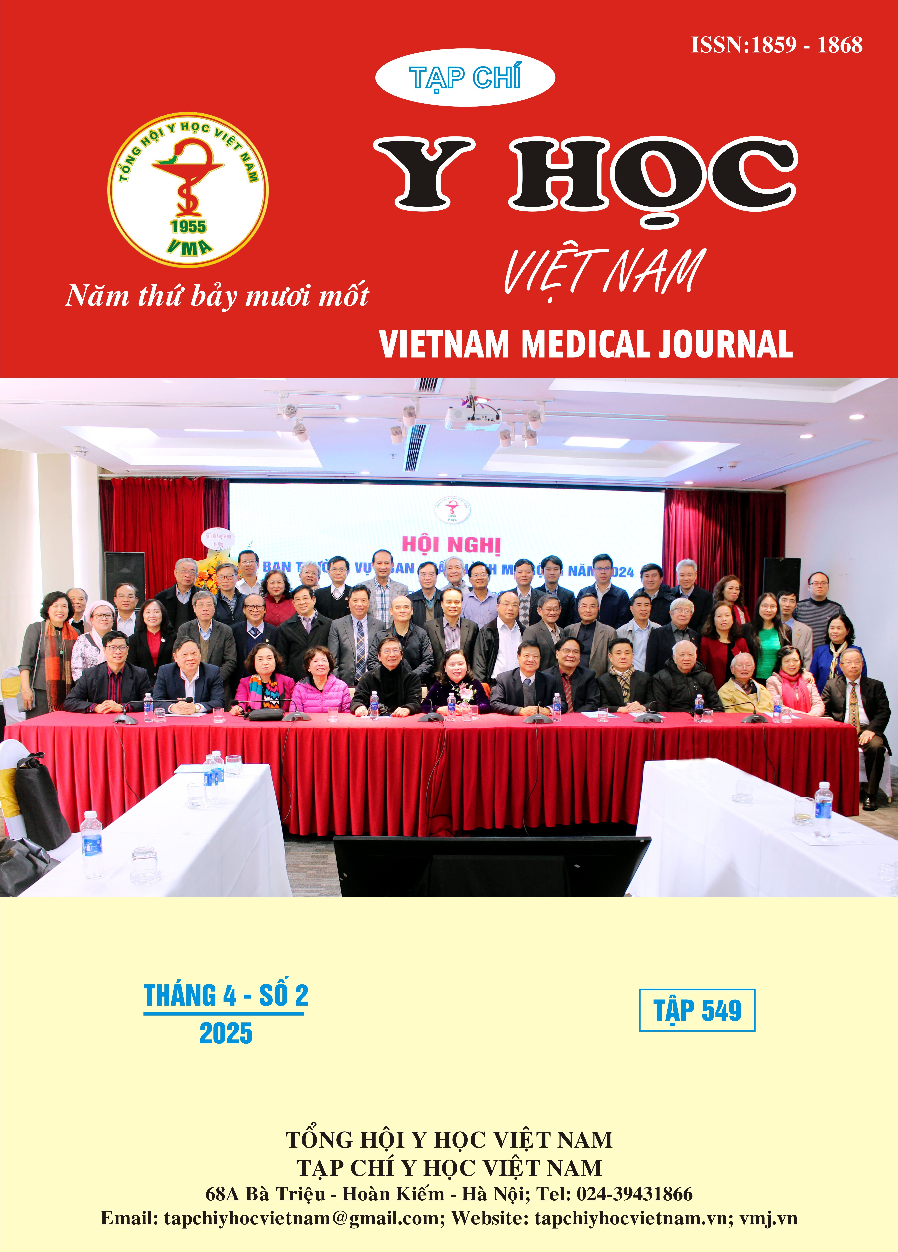CLINICAL AND PARACLINICAL FEATURES OF PACING INDUCED CARDIOMYOPATHY
Main Article Content
Abstract
Background: Right ventricular pacing in patients with permanent pacemakers can cause pacing-induced cardiomyopathy (PICM), which, in this study, was defined as a decrease of more than 10% in LVEF, resulting in post-implantation LVEF of less than 50%. Purpose: This study aimed to investigate the prevalence and explore some clinical and paraclinical characteristics of PICM in patients with permanent pacemakers with right ventricular pacing. Method: Using case-control study, we collected data from patients who have implanted permanent pacemaker for at least 01 month. Results: (a) Among the 112 patients with permanent pacemakers with right ventricular pacing for an average device duration of 5.6 years, 14 (patients) were diagnosed with pacemaker-induced cardiomyopathy, accounting for 12.5%. (b) 42.8% of patients/those with pacing-induced cardiomyopathy exhibited clinical symptoms (dyspnea, hepatomegaly, edema, and chest tightness). (c) The group of patients who developed PICM had a higher ventricular pacing percentage than the control group, p < 0.001. The pacemaker QRS interval (pQRS) in the group of patients with PICM was wider than the controls, p < 0.001. (d) Regarding echocardiographic characteristics, before implantation, the LVEF in both two groups (with and without PICM) was similar (p=0.06). However, patients with left ventricular dilatation before implantation had a higher rate of PICM (p=0.001). Conclusions: Findings suggest that PICM can occur at a significant rate in patients with right ventricular pacing, especially in those with left ventricular dilatation before implantation. The common clinical symptom is dyspnea. Patients with PICM have a higher ventricular pacing percentage and wider pQRS interval than those without the disease.
Article Details
Keywords
Pacing-induced cardiomyopathy, right ventricular pacing, heart failure
References
2. Lee S.A., Cha M.J., Cho Y., Oh I.Y., Choi E.K., Oh S. Paced QRS duration and myocardial scar amount: predictors of long-term outcome of right ventricular apical pacing. Heart Vessels. 2016;31(7):1131–1139.
3. Yu C.M., Fang F., Luo X.X., Zhang Q., Azlan H., Razali O. Long-term follow-up results of the pacing to avoid cardiac enlargement (PACE) trial. Eur. J. Heart Fail. 2014;16(9):1016–1025.
4. Kaye G., Ng J.Y., Ahmed S., Valencia D., Harrop D., Ng A.C.T. The prevalence of pacing-induced cardiomyopathy (PICM) in patients with long term right ventricular pacing - is it a matter of definition? Heart Lung Circ. 2019;28(7):1027–1033.
5. Kim JH, Kang KW, Chin JY, et al. Major determinant of the occurrence of pacing - induced cardiomyopathy in complete atrioventricular block: a multicentre, restrospective analysis over a 15-year period in South Korea. BMJ Open. 2018;8.
6. Tabata T, Grimm RA, Bauer FJ, et al: Giant fl ow reversal in pulmonary venous flow as a possible mechanism for asynchronous pacing-induced heart failure. J. Am. Soc. Echocardiogr. 2005;18: 722–728.
7. Lee MA, Dae MW, Langberg JJ, et al: Eff ects of long-term right ventricular apical pacing on left ventricular perfusion, innervation, function and histology. J. Am. Coll. Cardiol 1994;24: 225–232
8. Dor O, Haim M, Barrett O, Novack V, Konstantino Y. Incidence and Clinical Outcomes of Pacing Induced Cardiomyopathy in Patients With Normal Left Ventricular Systolic Function and Atrioventricular Block. Am J Cardiol. 2020; 128:174-180.
9. Fleischmann K.E., Orav E.J., Lamas G.A., Mangione C.M., Schron E., Lee K.L., Goldman L. Pacemaker implantation and quality of life in the Mode Selection Trial (MOST). Heart Rhythm. 2006;3(6):653–659.
10. Ebert M., Jander N., Minners J., Blum T., Doering M., Bollmann A., Hindricks G., Arentz T., Kalusche D., Richter S. Long-term impact of right ventricular pacing on left ventricular systolic function in pacemaker recipients with preserved ejection fraction: results from a large single-center registry. J. Am. Heart Assoc. 2016;5(7):e003485.


